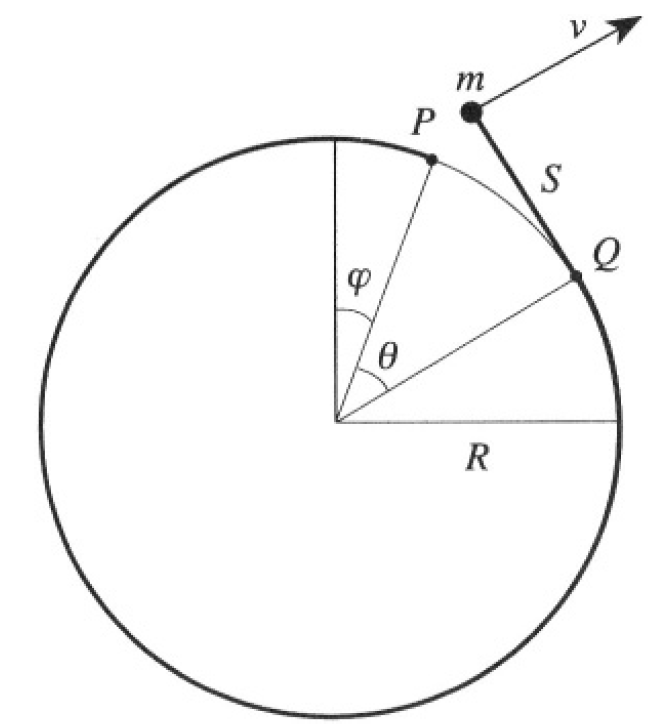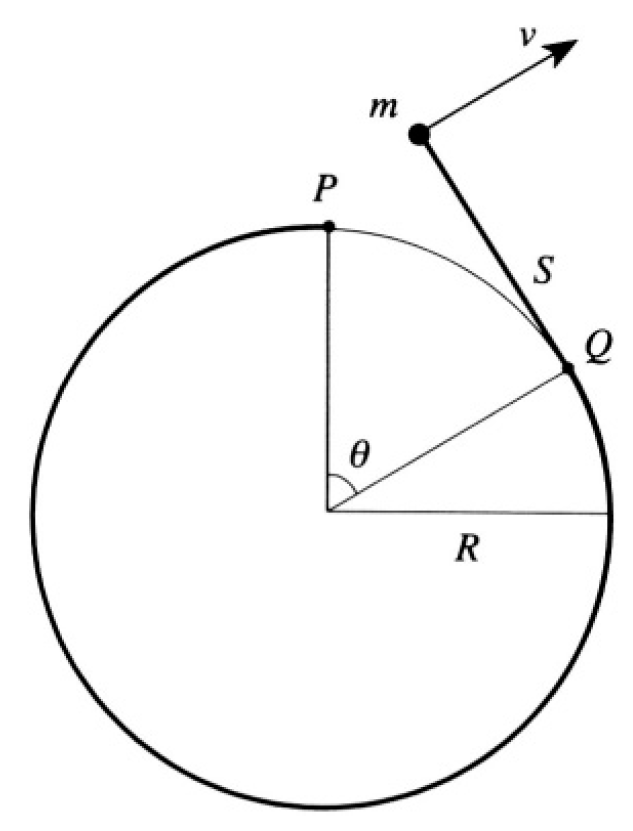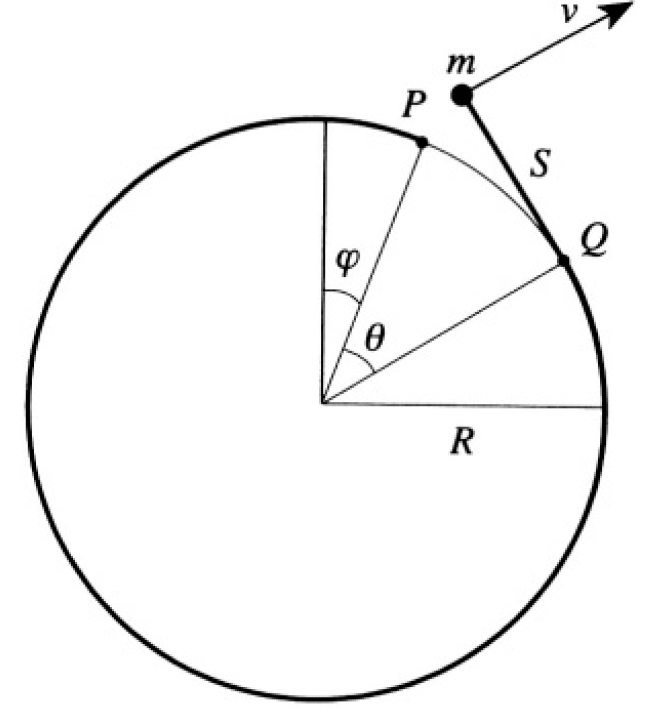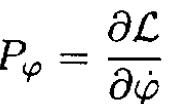


 الفيزياء الكلاسيكية
الفيزياء الكلاسيكية
 الكهربائية والمغناطيسية
الكهربائية والمغناطيسية
 علم البصريات
علم البصريات
 الفيزياء الحديثة
الفيزياء الحديثة
 النظرية النسبية
النظرية النسبية
 الفيزياء النووية
الفيزياء النووية
 فيزياء الحالة الصلبة
فيزياء الحالة الصلبة
 الليزر
الليزر
 علم الفلك
علم الفلك
 المجموعة الشمسية
المجموعة الشمسية
 الطاقة البديلة
الطاقة البديلة
 الفيزياء والعلوم الأخرى
الفيزياء والعلوم الأخرى
 مواضيع عامة في الفيزياء
مواضيع عامة في الفيزياء|
Read More
Date: 7-8-2016
Date: 11-8-2016
Date: 25-8-2016
|
Unwinding String
A point mass m is attached to a long, massless thin cord whose other end is attached to a fixed cylinder of radius R. Initially, the cord is snugly and completely wound up around a circular cross section of the cylinder, so that the mass touches the cylinder. No external forces are acting, except for an impulse at t = 0 directed radially outward to give the mass m an initial velocity of magnitude v0. This starts the mass unwinding (see Figure 1.1a). The point P is the initial position of the mass, and Q denotes the instantaneous contact point between the cord and the cylinder.

Figure 1.1a
a) Find the Lagrangian and equation of motion in terms of the generalized coordinate θ as a function of time, satisfying the initial conditions.
b) Using the above solution, find the angular momentum of the mass about the center of the cylinder. Is angular momentum conserved? Why? Is the energy conserved? Why?
c) Now consider a new situation in which the cylinder, taken to be hollow and of mass M (same radius R), can spin freely as the mass unwinds. The new angle φ measures the position of P (the place where the mass was at rest) with respect to the vertical axis (see Figure 1.1b). Write down the Lagrangian in terms of the generalized

Figure 1.1b
coordinates θ and φ. Identify two conserved quantities and express them as functions of θ and φ.
d) Solve for θ(t). Which way does the cylinder spin?
SOLUTION
a) You can write a Lagrangian using Cartesian coordinates x, y and express it as a function of  (see Figure 1.2a). However, if you notice that the length of the unwound string Rθ, is and it unwinds with angular velocity
(see Figure 1.2a). However, if you notice that the length of the unwound string Rθ, is and it unwinds with angular velocity  you can immediately write a Lagrangian, which is just a kinetic energy in this case
you can immediately write a Lagrangian, which is just a kinetic energy in this case

The equation of motion will be


Figure 1.2a
or

or for θ ≠ 0,

whose solution is θ2 = 2At + B. From the initial condition θ(0) = 0 and

i.e.,  we conclude that B = 0 and A = v0/R, so
we conclude that B = 0 and A = v0/R, so

b) The angular momentum 1 about the center of the cylinder is given by

The angular momentum is not conserved, since there is a torque from the cord connected to the cylinder; the energy, on the other hand, is conserved, because the force on the mass m is always perpendicular to its velocity:


Figure 1.2b
c) Again we can employ cartesian coordinates (see Figure 1.2b), but if we use the fact that the cord is always perpendicular to the radius of the cylinder at the point of contact we can write the Lagrangian in the form

From this equation, we can immediately obtain the integrals of motion. An angular momentum which is now conserved is
 (1)
(1)
Initially, it is equal to zero, and since the initial impulse does not give the system any angular momentum, it will be zero for all time. So, we have from (1)
 (2)
(2)
The energy is also conserved:
 (3)
(3)
d) From equation (2) we can express  in terms of θ and
in terms of θ and  :
:
 (4)
(4)
Substituting (4) into (3) we obtain

After some algebra, letting α ≡ 1 + (M/m) and β ≡ (v20/R2) we have

Integrating this equation results in

Therefore:

From the initial condition θ(0) = 0, we find that C2 = α, so

Substituting back α and β we have

For M/m = → ∞ (i.e., a fixed cylinder), this result reduces to that obtained in (a). It is obvious from angular momentum conservation that the cylinder would spin in the opposite direction from that of the unwinding cord. Indeed, from (4) we see that if  then
then 



|
|
|
|
لخفض ضغط الدم.. دراسة تحدد "تمارين مهمة"
|
|
|
|
|
|
|
طال انتظارها.. ميزة جديدة من "واتساب" تعزز الخصوصية
|
|
|
|
|
|
|
مشاتل الكفيل تزيّن مجمّع أبي الفضل العبّاس (عليه السلام) بالورد استعدادًا لحفل التخرج المركزي
|
|
|